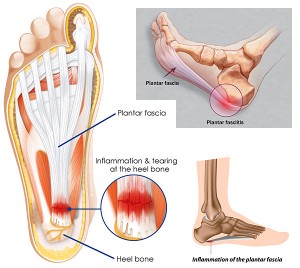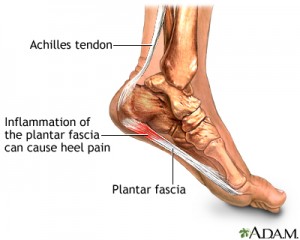Health and Wellness Coach Training Program
With disease and obesity at an all-time high in our nation, it is our mission at The Soma Institute to be a part of the solution. Soma is offering a 15-week intensified Health & Wellness Coach Training Program to students interested this growing career.
The Soma Institute addresses all aspects of health, including: diet and food; relationships and emotional well-being; exercise and physical health; and career and spirituality development. We train you to fill this growing void and become advocates for your clients, helping them become happier and healthier in all facets of their lives.
The Health and Wellness Coaching Certificate Program trains our students in:
- Disease prevention
- Strategies for coaching people with health challenges
- Healthy habits & Motivational techniques for weight loss
- Stress reduction & Chronic disease management
If you’re interested in a career as a Health and Wellness Coach, give an Admissions Representative a call at The Soma Institute at 1-800-694-5314.
Become A Health and Wellness Coach
Become A Health and Wellness Coach
Transform yourself and others by following your dream to become a Health and Wellness Coach today.
Learning to be a Health and Wellness Coach is for anyone who dreams of personal development. Growth happens through change—and Health & Wellness Coaches are the conduit to facilitate that change in others. With so much disease and depression in the world, people are hungry for personal growth, self-improvement, and living happier lives. If you are ready to help them reach their dreams and goals, The Soma Institute is the right place for you.
People’s potential can sometimes lay dormant; Health and Wellness Coaching can take you and your clients to the next level of living. The Soma Institute provides a foundation in Health and Wellness Coaching techniques: healthy lifestyle choices and strategies for maintaining a professional wellness coaching practice.
The Health and Wellness Coaching Program will teach students to help clients establish goals, maintain motivation, remain accountable and focus on their successes as they change and manage their lifestyle to embody health and wellness. If you’re interested in learning more, call a Soma Institute Admissions Representative today at 1-800-694-5314.
Massage Therapy Certificate
Massage Therapy Certificate
If you enjoy helping others and dream of becoming a Massage Therapist, it’s time to launch your career at The Soma Institute in Chicago, Illinois. As a qualified Massage Therapist, you can use your specialized skills to help treat illness and injury, to rehabilitate injuries and overworked muscles, and to improve the overall health of your clients.
The Soma Institute offers an 11 and 15 month Massage Therapy program dedicated to training students in many aspects of massage therapy, including:
- Therapeutic Sports Massage
- Prevention Techniques & Injury Treatment
- Myofascial Release & Therapy
- Pulled Muscles & Sciatica Treatment
Classes are led by our expert professional massage therapists with years of experience in all areas of massage. Now is the time to take advance of this opportunity and launch your career in Massage Therapy.
If you’re interested in learning more about The Soma Institute and the Massage Therapy course, please give an Admissions Representative a call at 1-800-694-5314.
Massage School
The Soma Institute of Chicago, Illinois offers Massage School training by expert professionals with successful practices and years of experience. If you’re interested in launching a career in massage therapy, this is your opportunity to become a qualified clinical massage therapist.
The Soma Institute is committed to launching new and successful careers in massage therapy. We train you to do more than just traditional massage therapy; besides deep tissue body work and sports massage, we also train in hydrotherapy, injury rehabilitation, strained muscles, and stress relief.
We offer 11 month & 15 month Massage Therapy Diploma Programs. Graduates of our 750-hour Clinical Massage Therapy Diploma program are ready for careers in medical offices, private practices, gyms, and spas. The Soma Institute, however, cannot guarantee placement. Our schedules are flexible to fit your busy lifestyle.
Is Clinical Massage Therapy the Right Career Choice For You?
If you’re interested in learning more about careers in Clinical Massage Therapy and exploring whether The Soma Institute is right for you, speak to an Admissions Representative at 1-800-694-5314.
Plantar Fasciitis: The Agony of the Feet
Plantar fasciitis is the most common cause of foot pain in athletes. But, unfortunately, it’s not exclusive to athletes. Normal people can get it, too.
As the name implies, plantar fasciitis is inflammation of the plantar fascia, which is the fascia on the bottom of your foot. The fascia pulls tight and thickens, causing a deep, achy, sometimes even stabbing pain that settles in on the front of your heel. Some of the more popular causes of plantar fasciitis are:
1. Overtraining. This mostly applies to runners who keep pushing themselves through the pain. Great for your ego, terrible for your feet.
2. Overtraining with improper footwear. Your running shoes are only good for about 400 to 500 miles, depending on the shoes and how hard you train.
3. Just improper footwear in general. Shoes that lack arch support, or shoes that force your foot into constant plantar flexion (ie, high heels) contribute greatly to the onset of plantar fasciitis.
4. Age. Most people who suffer from this are between the ages of 40 and 60. However, this does not mean you’re immune if you’re in your twenties. It just means you’re going to feel that much older when you get it.
5. Weight gain and pregnancy. They both have the same effect, which is placing extra stress on the fascia in your feet.
6. Etc. God forbid you suffer from the dreaded etc.
The primary symptom of plantar fasciitis is pain in the bottom of the foot, particularly the first few steps you take in the morning. The pain usually goes away throughout the day as the tissue warms up, and then comes back later in the day as the tissue fatigues, or after sitting for long periods of time.
What most people don’t know is that the tendon from your calf muscles basically turns into the fascia on the bottom of your foot. That means tight calf muscles will put an enormous stress on the plantar fascia. So before trying anything else, try loosening your calf muscles with self massage, or with a heat pack, or get a massage. Remember, as with many disorders, the location of the pain does not always indicate the location of the problem.
If you have flabby calves and the pain is still there, our answer is still: get a massage. A qualified massage therapist will strip through the thickened fascia of your sole and break apart the adhesions limiting your mobility. The stripping should be administered from heel towards the toes, as there is always the chance of a bone spur developing on the front of the heel. Which means if you strip through from toes towards the heel you might literally be stabbing your client with their own tissue. If no bone spur is suspected, frictioning at the attachment site on the anterior medial heel will help to loosen the fascia as well. Hydrotherapy for plantar fasciitis should be heat before the treatment if no inflammation is present, and ice after to control any inflammation you may have created.
And then you need to take care of yourself, too. Things you can do to relieve plantar fasciitis or prevent it from coming back include:
1. Stay healthy. Less extra weight means less extra stress on your feet.
2. Wear better shoes. No high heels. No worn out sneakers. And don’t go barefoot on hard surfaces.
3. Stretching. Stretch your calves and your plantar fascia by forcing your foot and ankle into dorsiflexion (forcing your toes up towards your head, like putting your toes on the ledge of a step).
4. Ice massage to relieve pain and reduce inflammation. A plastic bag with a few ice cubes in it works. A frozen paper cup is good, too, for rolling over the sore spots until it goes numb.
And just to end this with a slight sales pitch: All our Soma graduates have been trained in the treatment of plantar fasciitis. If you want to book an appointment with one of our therapists, just follow this link.




 Get Information
Get Information Tour Soma
Tour Soma Apply Now
Apply Now

 Jason VonGerichten – Instructor
Jason VonGerichten – Instructor